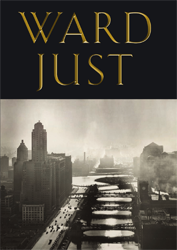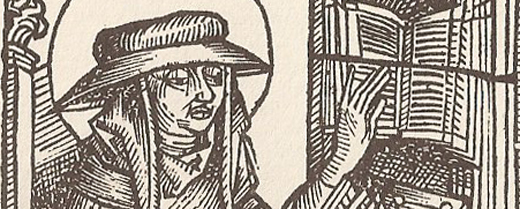Gotham Diary:
In 1937
19 July 2012
Thursday, July 19th, 2012
You will recall that Tom Wolfe’s Bonfire of the Vanities begins with a mistake. Distracted by an argument with his lover, Maria, Sherman McCoy misses the Manhattan-bound exit at the heart of the Triborough Bridge (which is, naturally, a complex of three bridges) and barrels on into the Bronx, where he simply takes the next exit in order to turn around. Getting back onto the highway turns out to be difficult, and, in a panic, Sherman drives recklessly enough to hit a kid in the street. Thus begins the downfall of this Master of the Universe.
The mistake is not Sherman’s however. Sherman, we are told, is a born-and-bred New Yorker. No one raised in the Metropolitan Area would dream of “taking the next exit.” That may work perfectly well in Nebraska, but any expectation that the next exit will be anything like the one that you just missed is utterly foreign to natives of these parts. The mistake was Tom Wolfe’s. Although Bonfire is an extremely compelling read — or was at the time — it betrays its outsider’s viewpoint at the very beginning, and is manifestly not the purveyor of secret knowledge that it claims to be.
Amor Towles’s The Rules of Civility is a much better book than The Bonfire of the Vanities, and every bit as compelling, but it is haunted by an air of fantasy that is just as sharp as the superficiality of Wolfe’s cluefulness. Narrated by Kathleen Kontent, the daughter of Russian immigrants, raised in Brighton Beach (but a Christian), The Rules of Civility is in many ways a dream about New York City on the eve of World War II, an era that comes easily to mind because Ralph Lauren spends so much money trying to convince us that we’re still living in it (and ought to dress accordingly). The fantasy — the unreal part — is not a matter of gaffes of the “next exit” order, but something more subtle.
It was in an ivory envelope embossed with a scallop shell. On the front, there was no stamp, but it was addressed in perfect calligraphy. I don’t think I had ever seen my name so beautifully inscribed. Each of the Ks stood an inch tall, their legs sweeping elegantly under the other letters, curling at the end like the toe of an Arabian shoe.
Inside, there was a card edged in gold. It was so think I had to rip the envelope to set it free. At the top was the same image of the scallop, while below were the time and date and the requesting of the honor of my company. It was an invitation to the Hollingsworth’s sprawling Labor Day affair. From a a few hundred miles at sea, another act of grace by the right fine Wallace Wolcott.
The fantasy is that people like Wallace Wolcott (a WASP paragon too fine to be played by anyone but Gary Cooper) would find this sort of thing interesting enough to describe. Unlike Kate, Wallace would have seen his name perfectly inscribed before he knew how to read. He would take perfect calligraphy for granted — there was until recently a well-known service that would fill out all the addresses on your wedding-invitation list. The only comment that Wallace might make, assuming that Kate, in her enthusiasm, has not overlooked the detail, is that the Hollingsworths would surely have requested the honour of her company.
***
The Rules of Civility is such a well-packed book (although not an especially long one) that it is hard to believe that it takes place entirely within the space of a year, 1937. Whenever Kate would return to her flat on 11th Street, I’d be amazed that she was still living there, after all this…. time. The novel is full of lively characters and clearly-drawn scenes, and something is always happening. (New York City demonstrates that the “small town” effect requires a population of many millions.) The action on the surface is in perfect counterpoise to the mystery below, which is a romance between two people who are themselves mysteries. Our narrator is one of these people; she is a fine study in hiding-in-plain-sight. We know a few things about her — very few. We have no idea how she covered the socio-economic distance between Brighton Beach and the typing pool at a venerable Wall Street law firm. We have no idea how or where she acquired the wit and panache to get an important job at a (fictional) Condé Nast start-up. Kate seems to know that it’s best to keep most of her personal history under wraps; if she’s mysterious, it’s for reasons that she’d like to put behind her. Let me be clear that there is nothing fantastical about Kate’s career, improbable though it might seem. New York is the natural abode of many such mysterious people, and it would be wrong-headed to expect Amor Towles to take Dawn Powell’s skeptical scalpel to them.
The other mysterious person is Tinker Grey. He’s so mysterious that he seems always to be enveloped in a slight but photogenic fog. We meet him in the novel’s frame, at the Museum of Modern Art, where an exhibition of Walker Evan’s photographs has opened, in 1966. The photos were taken on the city’s subways, with a hidden camera. Tinker, rather wonderfully, turns out to be the subject of two of them. In one, he is gaunt but lively; in the other, prosperous but world-weary. As Kate knows, the latter picture must have been taken first. So: what happened to Tinker? How did he get flushed out of high life? And was he, despite everything, Kate’s first and greatest love? You will find out the answers to these questions, which Towles has the skill to make urgent, when you get to the end of The Rules of Civility. And you will almost certainly have a good time getting there.
This is a frankly elegiac book, a backward glance at the excitement and uncertainty of young people scrambling about the city. There is a finely-dampered sense of doom (Wallace Wolcott sails off to fight in the Spanish Civil War), of things coming to an end; but what is really coming to an end, of course, is youth, not a way of life. What’s over, at the end, is Kate’s innocence about the glamour of rich people’s lives. She marries one of thoese people, and finds happiness with him, but the awe that her tough-girl patina barely conceals at the beginning of the novel is evaporated by what 1937 has to teach her. The Rules of Civility would have been a better book — a truly great book, I suspect — if Amor Towles had written it in the third person, and not tugged at us to gape sympathetically at the bits and bobs of Red Book snazziness that — more or less attractively — litter Kate’s tale.
When dinner was over, I helped Wallace carry the gifts to the back pantry. Lining the hallway were photographs of family members smiling in enviable locales. There were grandparents on a dock, an uncle on skis, sisters riding sidesaddle. At the time it seemed a little odd, this back hall gallery; but running into a similar setup in similar hallways over the years, I eventually came to see it as endearingly WASPy. Because it’s an outward expression of that reserved sentimentality (for places as much as kin) that quietly permeates their version of existence. In Brighton Beach or on the Lower East Side, you were more apt to find a single portrait propped on a mantel behind dried flowers, a burning candle, and a generation of genuflection. In our households, nostalgia played a distant fiddle to acknowledgment of the sacrifices made by forebears on your behalf.
A third-person narrator could have told you more than Kate is willing to divulge, while recasting the pangs of envy so that you would not feel uppity for not sharing them.
As for mistakes of the “next exit” order, I did find a very small one. There have never been any “once tony brownstones” in Washington Square. Â
















